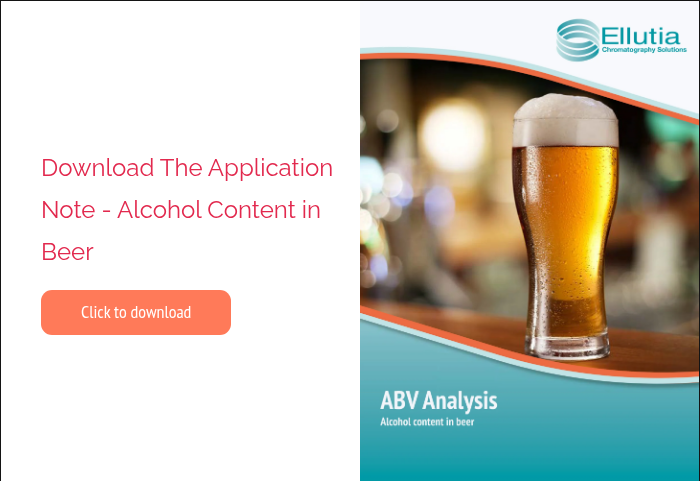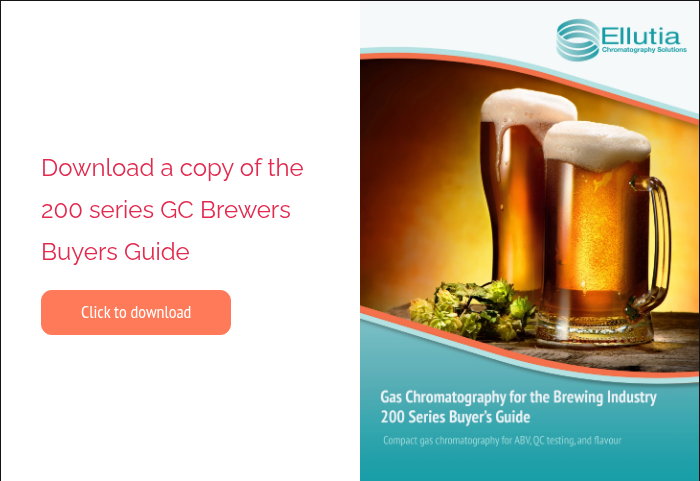ABV has to match the label. Waiting for an external lab slows release and ties up tanks. Density checks help during fermentation, but CO₂, haze and late additions can skew results. You need a direct ethanol measurement you can rely on. The Ellutia 200 Series GC with FID measures ethanol directly, in-house, so you can make same-day decisions with confidence.
How ethanol testing works (GC-FID)
In this video we show a beer sample run from bench to result on the 200 Series. Degas and, if cloudy, filter. Inject the sample. The GC separates the components and the detector’s hydrogen flame measures ethanol directly, giving you a clear ABV in minutes without density guesswork.
ABV testing made simple
ABV drives duty, label claims and retailer requirements. Measuring ethanol directly removes the drift that CO₂, haze and late additions can introduce. For alcohol-free and low-alcohol beers, we calibrate to your targets (in England “alcohol-free” means ≤0.05% ABV; in the US “non-alcoholic” is <0.5% ABV) and confirm sensitivity with a check sample.

How this fits your brewery
Build ABV into routine QA without slowing production. Use it mid-fermentation to track progress and before packaging to confirm the label claim. Many producers also verify NoLo lines on the same system. Results arrive on your schedule, so releases stay on track.

Method and set-up
We configure a compact 200 Series GC (FID) for brewery matrices and supply a starter method and SOP with acceptance checks. Sample prep is practical: degas; filter if cloudy. As workloads grow, add an autosampler to run batches unattended. If helium is limited, we’ll advise on hydrogen carrier options.

READY TO BRING ALCOHOL TESTING IN-HOUSE?
Visit our blog posts
2 min read
How does GC work in Alcohol testing
Jul 22, 2025 by Ellutia
4 min read
Ensuring Quality Control: Testing in Beer Production
Jan 22, 2024 by Ellutia






